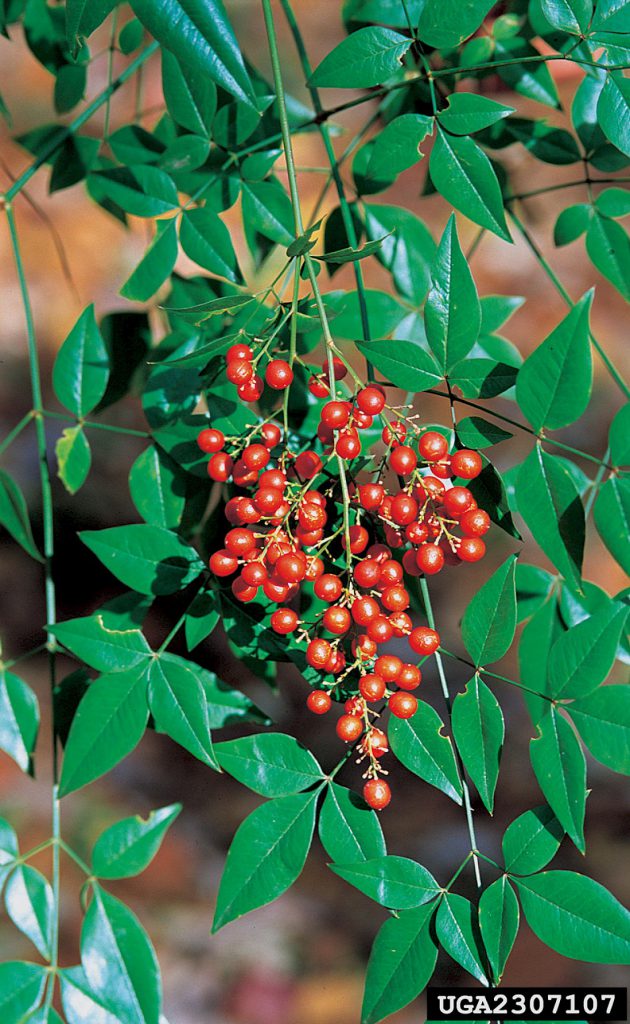Nandina (Nandina domestica)
Nandina, or heavenly bamboo, started in the landscape and now appears throughout some of our natural areas. This evergreen shrub grows upright and produces bright red berry clusters, similar to Coral Ardisia. It reaches heights of six to eight feet with tri-pinnately compound leaves. The leaves start as a reddish color before turning green and then they turn red again in the fall. This plant primarily travels via commercial trade, but also from wildlife. The berries attract birds, who unintentionally disperse the seeds throughout the area. If you have Nandina in your landscape, remove all components of the plants (leaves too) and put them in the garbage or trash. Do not compost or put it with your yard waste.

Control
Preventative
Limiting planting and removal of existing nandina stands prevents spread. Removal of Nandina will be most appropriate prior to fruiting of the plant – otherwise, Nandina can easily spread.
Cultural/Physical
Communicating with neighbors, friends, and family from purchasing and trading Nandina will tremendously help reduce its pressure in the landscape. In addition, planting the sterile, non-invasive Firepower Nandina, Nandina domestica ‘Firepower’ is a great alternative. Other alternatives include Chinese Fringeplant (Loropetalum spp.), Chinese Mahonia (Mahonia fotuneii), and Abelia (Abelia x grandiflora).
Mechanical
Mowing helps control infestations, but it may still spread from underground rhizomes. Therefore, manually removing plants and making sure to remove roots will reduce and eliminate the Nandina population in your landscape.
Biological
There are no known biological controls.
Chemical
There are limited control methods regarding chemical controls. Spot treatments of glyphosate or triclopyr serve as alternatives, but follow the label’s directions for application methods.
Conclusions
The showy, yet highly invasive plant spreads aggressively across the landscape. Therefore, if you or someone you know is having issues managing this invasive or any other invasive plants within your landscapes, reach out to your county extension office for more information. The invasion of the landscape snatchers has begun, but we can stop it!
More Information:
Blog Series
Like what you are reading? Therefore, check out all the published blogs in this series. https://blogs.ifas.ufl.edu/nassauco/tag/invasion-of-the-landscape-snatchers/
Or quickly jump to the individual blogs in the series:
Invasion of the Landscape Snatchers
Tuberous Sword Fern (Nephrolepis cordifolia)
Coral Ardisia (Ardisia crenata)
Wild Taro (Colocasia esculenta)
Mexican Petunia (Ruellia simplex)
Mother of Millions (Kalanchoe x houghtonii)
Mimosa Silk Tree (Albizia julibrissin)
Social Media Pages:
Other Media Pages
- Blog Page
- Nassau County Extension Page
- IFAS Assessment
- Center for Aquatic and Invasive Plants
- Contact Information
 0
0
